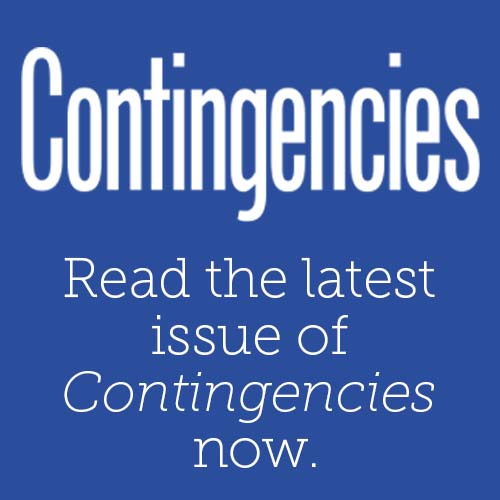Professionalism Counts — August 2018
|
The Actuarial Standards Board (ASB) promulgates new actuarial standards of practice (ASOPs), but also reviews and revises existing ASOPs. This is perhaps why, in addition to the actuary’s professional responsibility to observe applicable ASOPs laid out in Precept 3 of the Code of Professional Conduct, Annotation 3-1 also requires actuaries “to keep current regarding changes in the standards.”
The Academy’s Council on Professionalism has developed an online tool that is not a substitute for the ASOPs but can help practicing actuaries stay abreast of the ASOPs and meet these obligations: The Applicability Guidelines can help an actuary to initiate an analysis of which ASOPs are applicable to particular assignments and to keep current with new and revised ASOPs so that you can focus your attention.
The Applicability Guidelines do not provide guidance, as ASOPS do. The guidelines come in the form of a downloadable Excel spreadsheet, with a separate tab that covers each practice area. Each tab lists common assignments in that practice area and the ASOPs that usually apply to each assignment. At the top of each tab, the guidelines remind actuaries that ASOPs Nos. 1 (Introductory ASOP), 23 (Data Quality), and 41 (Actuarial Communications) apply to every assignment—a clue that every actuary should know these cross-practice ASOPs very well. For ease of access, the guidelines include a link to each ASOP listed. Recent exposure drafts are included on the last tab to give actuaries an idea of what the ASB may be considering for a particular ASOP.
The Applicability Guidelines are updated whenever the ASB adopts a new or revised ASOP. In the past year, for example, the ASB has not only revised two ASOPs—No. 17 (Expert Testimony by Actuaries) and No. 42 (Health and Disability Actuarial Assets and Liabilities Other Than Liabilities for Incurred Claims)—but also released four brand-new ASOPs:
- No. 51, Assessment and Disclosure of Risk Associated with Measuring Pension Obligations and Determining Pension Plan Contributions;
- No. 52, Principle-Based Reserves for Life Products under the NAIC Valuation Manual;
- No. 53, Estimating Future Costs for Prospective Property/Casualty Risk Transfer and Risk Retention; and
- No. 54, Pricing of Life Insurance and Annuity Products.
After the release of each new or revised ASOP, the relevant Academy practice council updates the Applicability Guidelines to show to which tasks the new or revised standard of practice likely applies. For example, the Health Practice Council updated the guidelines this past June for ASOP No. 42. Of the new ASOPs, Nos. 51, 52, and 53 have already been incorporated into the guidelines, and the Life Practice Council is working on an update to reflect ASOP No. 54. That update should be released this fall.
For assignments that touch upon more than one practice area, an actuary might wish to review the tabs for all relevant practice areas. For example, for work related to long-term care that involves life and health aspects, an actuary may want to review both the life and health tabs of the guidelines.
Do you have to use the Applicability Guidelines? The answer is a firm “no.” While the Applicability Guidelines are regarded as useful, they are not binding on any actuary. The guidelines are not published by the ASB, and therefore are not authoritative and do not constitute binding guidance. The ultimate responsibility under Precept 3 of the Code for identifying which standards apply to an assignment belongs—as it should—to you, the individual actuary.
As part of its mission to serve the public and the U.S. actuarial profession, the Academy provides the most recent Applicability Guidelines, updated by members of the Academy practice councils on the Academy website free of charge to everyone, not just Academy members. Use of the Applicability Guidelines might not be mandatory, but why not try to see whether it helps you comply with Precept 3 of the Code? We hope that you find the Applicability Guidelines helpful and that you will spread the word among your colleagues.
(Featured in the August 2018 Actuarial Update.)
Share







